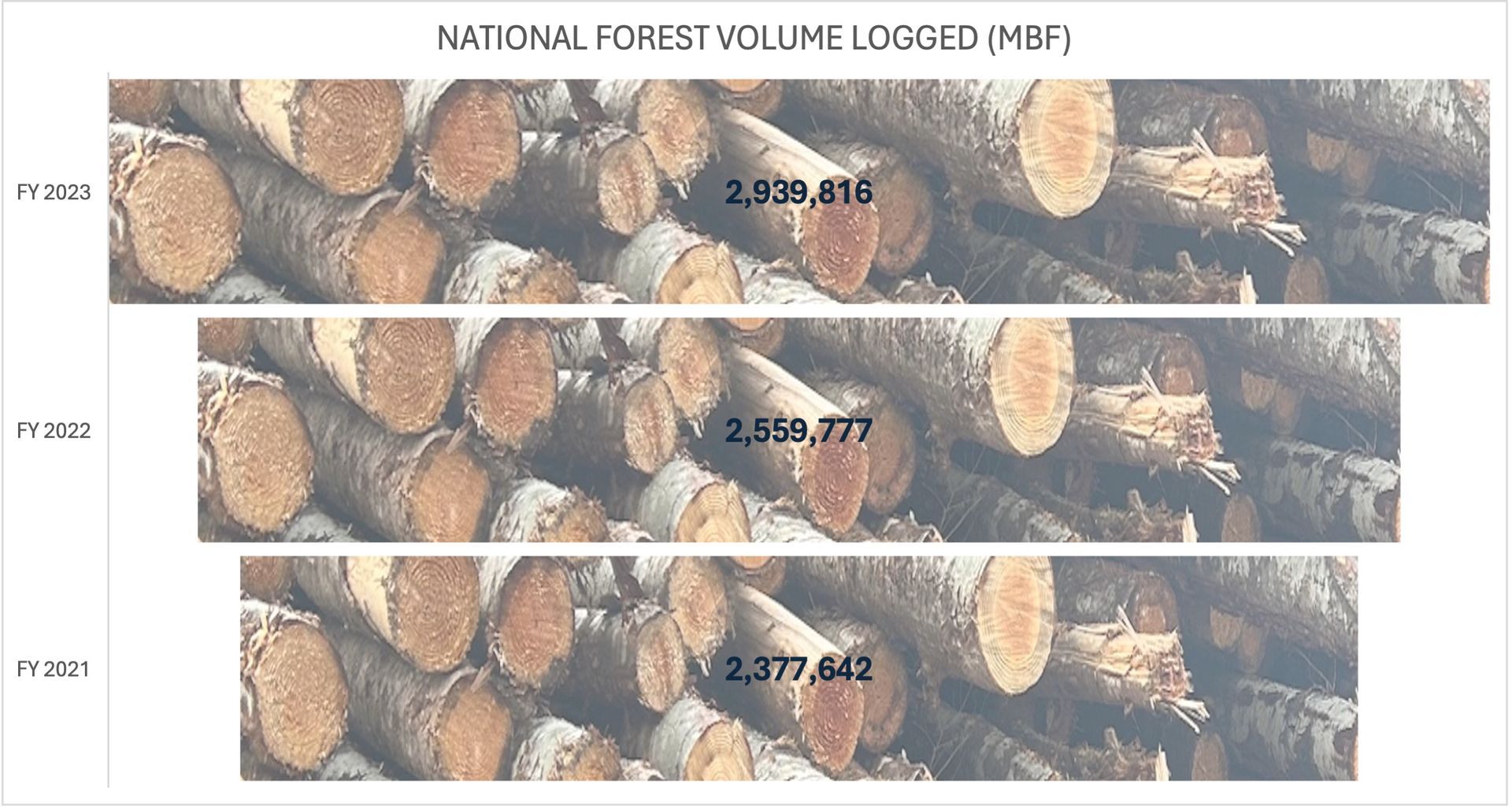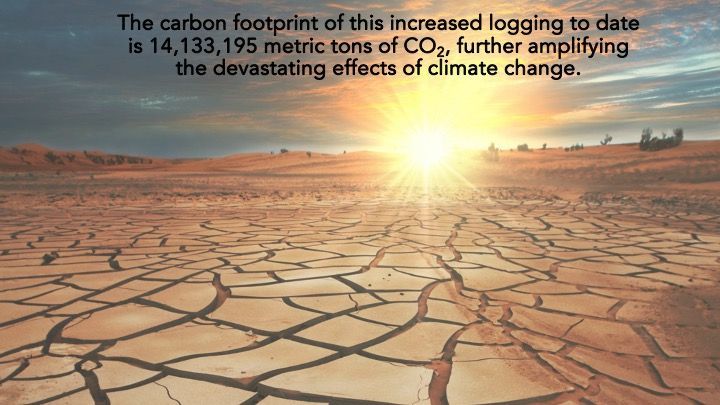National Forest Logging Increases by 24% Under Biden's Watch
John Talberth • June 2, 2024
Equivalent to taking 241,000 electric cars off the road each year

Since President Biden took office, the volume logged on our public lands has increased dramatically despite his pledge to end deforestation and forest degradation by 2030 under the Glasgow Leaders Declaration on Forests and Land Use. Volume logged is expressed in thousand board feet (MBF), and since 2021, the Forest Service total has risen from 2,377,642 MBF to 2,939,816 MBF through the end of fiscal year 2023 according to the agency's quarterly cut and sold reports [1]. This is a 24% increase. The results from FY 2024 continue this unsettling trend. Logging volume has jumped another 6% over the last year. The climate consequences are severe.

According to the latest scientific estimates, every thousand board feet (MBF) of timber logged in the US or internationally generates anywhere from 9.69 to 16.74 tons of carbon dioxide equivalent over the wood products life cycle [2]. National forest logging is on the higher end of this range because most of what is cut is mature, carbon dense timber. At an emissions factor of 15 tCO2-e/mbf, the emissions impact of a nearly one billion board foot (942,213 MBF) increase in annual volume cut on national forests compared with FY 2021 is over 8.4 million metric tons per year. That's enough to take nearly a quarter million (241,000) electric vehicles off the road each year and replace them with 193,000 gas guzzling SUVs [3]. A gaping hole in US climate policy continues to be Big Timber and the devastating climate consequences of industrial logging on both our public and private forestlands.
CSE and other members of the Forest Carbon Coalition are hard at work trying to turn things around. Last September, we published an updated version of Repairing America's Tattered Forests: Maximizing natural carbon removal while revitalizing or forgotten rural areas. This policy roadmap calls for ending the subsidized logging of public forestlands, including national forests, and contains an extensive list of policy interventions available to Congress and state legislatures for making a decisive turn towards full implementation of the Glasgow Leaders pact.
Footnotes:
[1] USDA Forest Service. All fiscal years since 1997. Forest Products Cut and Sold from National Forests and Grasslands. Available online here.
[2] Talberth, J., Carlson, E., 2024. Forest carbon tax and reward: regulating greenhouse gas emissions from industrial logging and deforestation in the US. Environment, Development, and Sustainability 17 Feb. 2024. DOI: https://doi.org/10.1007/s10668-024-04523-7.
[3] According to an analysis by Earthjustice, the lifecycle carbon savings of an electric vehicle relative to a conventional passenger car is about 35 metric tons. SUVs are about 20% less efficient than conventional vehicles, and thus require less of them to replace the EV fleet displaced each year.
Share Post
All Rights Reserved | Center for Sustainable Economy


